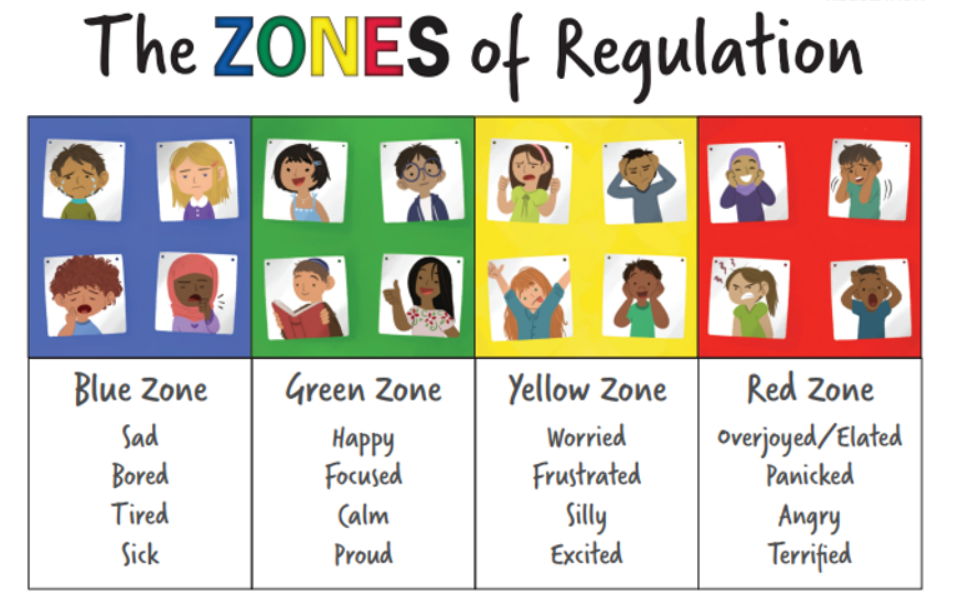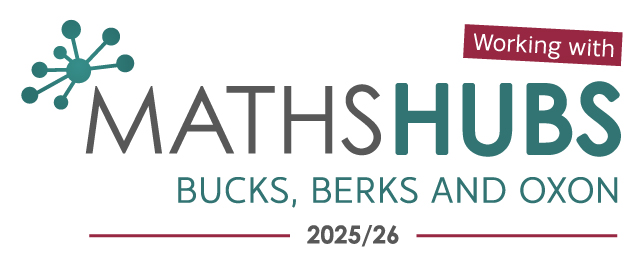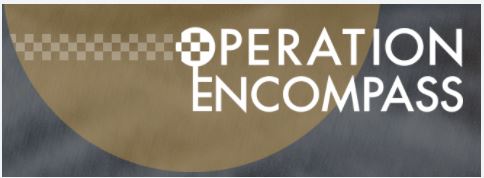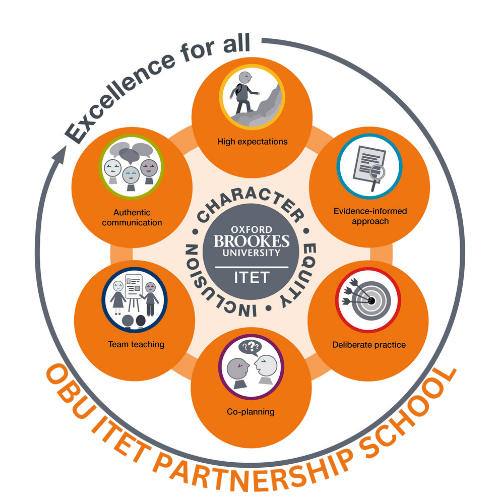Zones of Regulations
Supporting Emotional Regulation at St. Thomas More
At St. Thomas More, we use the Zones of Regulation to help children understand their emotions and develop strategies to manage them effectively. Regulation is a skill that everyone both children and adults need to work on, as we all face situations that can challenge our limits. Our aim is to equip children with practical tools to help them stay calm and focused when they enter a heightened state of alertness. By recognising when they are becoming less regulated, children can gain confidence and become more capable in managing their feelings. While some children develop this naturally, others benefit from structured guidance and practice.
What Are the Zones of Regulation?
The Zones of Regulation is a framework that teaches children to recognise and understand their feelings and internal states, and to use strategies to regulate themselves. It provides tools and approaches such as:
-
Mindfulness techniques
-
Sensory integration activities
-
Movement and exercise strategies
-
Thinking strategies to manage emotions
-
Building healthy social connections
The Zones offer a common language and compassionate framework to support positive mental health and emotional skill development for all children. It is particularly helpful as an inclusive strategy for neurodiverse learners, children with specific learning needs, those with social, emotional, or behavioural challenges, and children who have experienced trauma.
By integrating the Zones of Regulation into school life, we help children develop lifelong skills to understand, manage, and respond to their emotions in positive ways.
Which colour corresponds to which emotion?
The Zones of Regulation is a framework we use to help children understand and manage their emotions. Each zone represents a different state of alertness and emotional experience:
-
Green Zone: This is a calm, alert state where children are ready to learn and at their best. In the green zone, children may feel happy, focused, content, and prepared to engage in learning activities. This is the zone where optimal learning takes place.
-
Blue Zone: This zone represents low states of alertness. Children may feel sad, tired, hungry, or bored. Being in the blue zone often signals that a child may need rest, a snack, or some quiet time to regain focus.
-
Yellow Zone: The yellow zone describes a heightened state of alertness and elevated emotions, but with some control. Children in the yellow zone may feel stressed, frustrated, anxious, excited, silly, or nervous. It’s a signal that they may need strategies to calm down and regain focus.
-
Red Zone: The red zone represents an extremely heightened state of alertness with intense emotions. Children may feel angry, devastated, overwhelmed, or terrified. In this zone, they need support to regain control and return to a calmer state.

Why use the Zones of Regulation at home?
-
The zones provide a shared language for talking about emotions
-
They are easy for children to understand.
-
They help children label their feelings and recognise how they are feeling.
-
The zones show that no emotion is “bad.”
-
Children learn healthy coping strategies, which help them manage stress, anxiety, sadness, or strong emotions independently.
-
Children who develop self-regulation skills are more likely to become teens and young adults who can manage their emotions effectively.
-
Understanding their own and others’ emotions supports empathy and helps build positive friendships.
What can I do as a parent?
Talk with your child about:
-
How they are feeling and help them put their emotions into words. Model this yourself using the Zones language (e.g., “I’m frustrated, I’m in the yellow zone”).
-
The physical signs of their emotions. What does their body feel like when they are happy, nervous, or upset? (e.g., butterflies in the tummy when nervous). Recognising these cues is the first step in learning to manage emotions.
-
Why they are feeling a certain way. Has something happened to trigger the emotion?
-
Times when you, a family member, or a character in a book or film have felt the same way.
Key points to remember:
-
There is no “bad” zone.
-
Everyone experiences all of the zones at different times and in different situations.
-
While we can’t control how children feel, we can help them manage their feelings and behaviours.
-
It’s possible to be in more than one zone at the same time (e.g., sad and angry).
Create a Zone Check in at Home
The Zone Toolbox
We will be teaching and supporting children to develop strategies and tools to help them manage their zones. Our aim is for children to understand that there are different tools they can use to influence their zones and to discover which ones work best for them. We want children to identify ways to move from the Blue, Yellow, or Red Zone back into the Green Zone, as well as strategies to stay in the Green Zone.
Attached below are some resources with ideas for creating a toolkit at home and activities to try.





